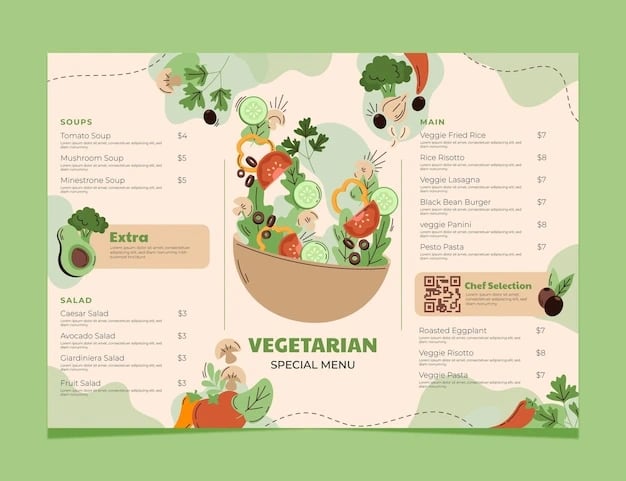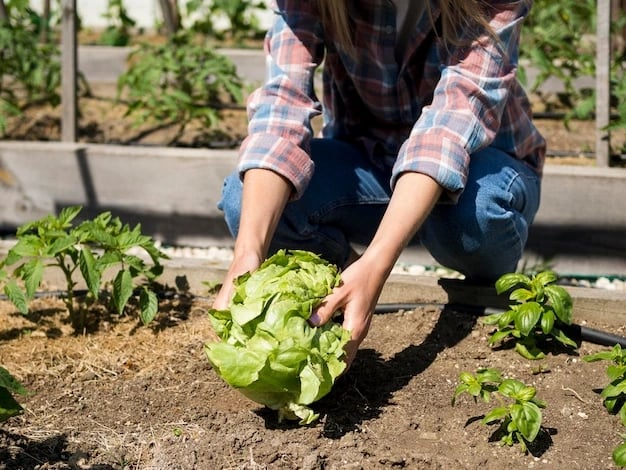Did you know the food industry is responsible for up to 26% of global greenhouse gas emissions, with restaurants being a significant contributor?
According to a recent study, restaurants waste the most food among the many categories of hospitality and food service providers; for instance, in the UK, they are responsible for 22% of the sector's overall food waste (WRAP, 2020). This places restaurants as the primary focus of FW prevention efforts.
As the world becomes increasingly aware of the impact of climate change, the pressure on the restaurant industry to adopt sustainable practices grows.
Younger diners, so think Gen Z, are increasingly seeking out and willing to pay more for restaurant food that is sustainable. This means there's both a business, as well as an environmental case for restaurants.
In this article, we will explore fifteen restaurant sustainability ideas to help you keep up with this growing trend.
Key Takeaways
-
Gen Z diners are willing to pay more at restaurants that use sustainable practices in their business.
-
Reducing food waste is the easiest and most impactful way to increase restaurant sustainability.
-
Sourcing food supplies locally attract new customers as well as boosting sustainability.
-
Reducing delivery packaging is a key sustainability issue with restaurant consumers.
What data says about restaurant sustainability
The latest studies and consumer research suggests sustainability is a growing trend with consumers.
The key findings include research from restaurant sustainability experts Phillip Daus and Dave Clement that shows the following:
-
Younger consumers are willing to pay an average premium of 20 percent for sustainable meals.
- Food waste and delivery packaging are the most important issues for Gen Z diners.
In a 2020 study by David Blum, he notes that food waste is the biggest problem the restaurant industry faces in sustainability. Research from the USDA shows that $2.6 trillion is lost every year to food waste with $162 billion coming from restaurants.
It’s clear, for both environmental and business reasons, that now is the time for restaurants to start looking closer at sustainability.
15 best restaurant sustainability practices and tips
Becoming a green restaurant requires introducing small changes that make a huge shift when they scale. Here are some best practices to follow on your way toward higher restaurant sustainability:
1. Reduce food waste
Do you know the 8 rules of effective restaurant operations? One of them is minimizing food waste. Here are a few ideas on how you can achieve that:
- Set food waste targets: Specific and time-bound targets help to decrease food loss and waste. These targets can raise awareness, direct attention, and allocate resources towards reducing food waste.
- Track food waste: A food waste inventory system helps restaurants figure out how much and where food is wasted. This info helps staff make smaller portions, change the menu, offer substitutes, and track progress in reducing waste. Knowing what and how much food you have helps manage freshness, quality, efficiency, and waste reduction.
- Predict ingredient needs: Despite the benefits, predicting food orders is not commonly practiced in the restaurant industry. The most effective way to do this is to assess historical POS data to see trends in the volume of guests during a given time period. Or push as many guests as possible to book online and use a reservation system to see the upcoming demand for ingredients.
- Reduce portion size: One approach to reducing food waste in restaurants is to offer smaller portion sizes at a lower price, while still providing larger portion sizes at a higher price. By doing so, customers with smaller appetites can order a meal that suits their needs and are less likely to leave behind uneaten food.
- Plan menus with through-lines: Designing menus with overlapping ingredients cuts down overall food costs, but also prevents waste. Overlapping the ingredients will ensure that you use everything that you purchase while keeping things interesting throughout the week.
Quentin Garcia, Executive Chef at Rainbird, El Capitan, Mainzer is focused heavily on reducing waste, and he says, "We [need to] practice utilizing our waste as much as we can away from the generalist notion of putting things up as specials. For example, fish/meat can be grinded down and used to make our own garums for use down the road in new menu items."
"Waste from vegetables are fermented and utilized in dishes to season ingredients without having to rely so heavily on just salt alone. If there is something we cannot ferment, then I try to dehydrate remainders and use this as an ingredient later to "rehydrate" and add a powerful flavor / textural contrast in a dish," Quentin Garcia continued to mention.
"This list can go on and on for waste, however, when waste is FINALLY just waste, compost is the answer or if the trimmings are safe, I'll give them to my sous chef, who then feeds them to her chickens," he says.
Quote source: runningrestaurants.com
2. Reduce meat on the menu

Reducing meat and Incorporating plant-based dishes on the menu is a great way to reduce carbon footprint since 60% of the agriculture industry's emissions come from meat production.
Bear in mind that poultry and fish and seafood on average tend to be more sustainable than beef, pork, or lamb. Beef is considered the most unsustainable meat mainly due to water consumption.
3. Energy-efficient appliances
Reduce energy consumption by investing in energy-efficient appliances. It will cut not only your utility bills but also lower carbon emissions.
Using timers and sensors on appliances like ovens and lighting will reduce energy waste. One more step is utilizing eco-friendly materials such as LED light bulbs.
Is your kitchen ventilation system designed correctly? When all the heat, steam, and odors are extracted, the need for air conditioning is reduced, which again means you use less energy. Smart energy management is one of the top technology trends in the hospitality industry.
4. Use local and seasonal ingredients
When possible, prioritize seasonal and local ingredients. You will support local farmers and the community and contribute to the reduction of greenhouse gas emissions produced by the transportation industry.
Plan menus around seasonal produce. Create a unique dining experience for your customers by buying fresh and flavorful ingredients from a local farm.
You can also consider growing your own produce. Fresh herbs or veggies from a garden or even a windowsill pot could be a significant stand-out feature of your venue.
Katie Reicher, Executive Chef at Greens Restaurant in San Francisco puts buying local at the heart of her sustainability strategy. According to her expertise, she advises buying locally. "Not only will you be supporting your community and economy, but you will also benefit by buying the freshest, best-tasting produce available for the lowest prices of the year. Farmers' markets are an amazing way to get in touch with the seasons with a fraction of the carbon footprint," she says.
Quote source: runningrestaurants.com
5. Promote reusable containers
Incorporating reusable containers for food packaging in your restaurant gives you a unique opportunity to engage customers in sustainable practices, reduce waste and conserve natural resources.
Provide customers with the option to take food and beverages in reusable containers. Offer discounts, loyalty program points, or other incentives for customers who bring their own boxes or cups.
Consider limiting the use of styrofoam or plastic containers by replacing them with sustainable packaging for delivery or takeout services.
6. Use eco-friendly cleaning products
Eco-friendly cleaning products reduce the number of harmful chemicals that pollute the environment and contribute to a healthier workplace for employees.
Purchase products made with natural, biodegradable ingredients free from harmful substances. Train your staff on proper cleaning techniques to ensure they use eco-friendly cleaning products correctly and effectively.
Establishing a system for properly disposing of cleaning products is also a good idea. It includes recycling bins and permitted hazardous waste disposal.
7. Donate used food
Donating unused food will reduce waste and support the local community.
Identify local organizations like charities, food banks, or homeless shelters that can accept food donations and other resources.
Publicize donation efforts on the restaurant's website and social media channels to raise awareness and encourage customers to support the cause.
8. Reduce water usage
Controlled water usage is essential to running a sustainable restaurant. Key areas to look at include:
- Install water-efficient fixtures: Upgrading to low-flow or aerated faucets and toilets can result in substantial water savings over time. These fixtures are designed to minimize water consumption without compromising functionality.
- Optimize dishwasher usage: Running your dishwasher only when it's fully loaded and adjusting the water settings accordingly can lead to significant water savings. Efficient dishwashing practices are essential in a restaurant setting.
- Train staff on water-saving practices: Educating your employees about the importance of water conservation and providing guidelines on turning off faucets when not in use or reporting leaks can create a culture of water consciousness within your restaurant.
- Serve water upon request: By offering water to customers only when requested, you can reduce the amount of water wasted on unused glasses. This simple step can make a noticeable difference in your water consumption.
9. Reduce delivery packaging
Recently, packaging has been identified by scientists as a crucial component of the major challenges we face when it comes to sustainable food consumption. With that being siad, reducing delivery packaging is of utmost importance for restaurant food sustainability.
Excessive packaging waste, particularly single-use plastics, contributes significantly to environmental pollution. By minimizing packaging, restaurants can diminish their environmental footprint and address the pressing issue of waste accumulation.
Furthermore, the production of packaging materials necessitates substantial resources, including energy, water, and raw materials. Through packaging reduction, restaurants can conserve these valuable resources, mitigating the environmental impact associated with their extraction and manufacturing processes.
10. Start a composting program
Composting is important for restaurant sustainability because it helps divert organic waste from landfills, where it would otherwise decompose and produce methane, a potent greenhouse gas. By composting, restaurants can reduce their carbon footprint and contribute to mitigating climate change.
Restaurants can start a composting program by implementing a few key steps:
First, they need to designate an area for composting and provide appropriate bins or containers for collecting organic waste.
Second, they should educate and train their staff on proper sorting and disposal of food scraps, coffee grounds, vegetable peels, and other compostable materials. It is crucial to ensure that non-compostable items like plastics or metals are kept out of the composting stream.
Finally, restaurants can partner with local composting facilities or community gardens to arrange for regular pickup or drop-off of compostable waste.
11. Energy-saving lighting
Replace the traditional light bulbs in your restaurant with energy-efficient LED bulbs. Install motion sensors or timers to automatically turn off lights in unoccupied areas.
12. Opt for sustainable seafood
If your restaurant serves seafood, ensure that it comes from sustainable sources. Use resources like the Marine Stewardship Council (MSC) and the Aquaculture Stewardship Council (ASC) to identify sustainable seafood options.
13. Go paperless
Whilst not for everyone, depending on your brand and service style, moving towards paperless is a way to save on paper.
The obvious place to start is replacing a paper menu with a digital menu if it makes sense for you. But you can also at all the other places where your restaurant consumes paper and see if they can be converted to digital. Instead of feedback cards use automated post-dining surveys over email. Save on paper receipts with pay-at-table technology that sends receipts over email.
14. Employee training and engagement
Educate your staff on sustainable practices and empower them to contribute to your restaurant's sustainability efforts. Encourage them to come up with innovative ideas and reward their efforts.
You can also encourage employees to attend sustainability-related workshops, conferences, or training programs offered by external organizations. This expands their knowledge and exposes them to innovative ideas and best practices in sustainability.
15. Sustainable Coffee and Tea
Research has shown that sustainable coffee and tea farming methods improve soil fertility, nutrient cycling, and water infiltration rates, leading to the long-term sustainability of the agricultural system.
Verify that suppliers provide transparent information about their sourcing practices, certifications, and their commitment to sustainability. Look for certifications like Rainforest Alliance, UTZ, or the Smithsonian Bird-Friendly certification, which ensure specific environmental and social standards are met.

Restaurants known for their sustainable practices
As customers become more conscious about the impact of their dining choices on the environment, the popularity of restaurants with sustainable practices grows.
Here are some restaurants for inspiration:
- Noma (Copenhagen, Denmark): Noma is a world-renowned restaurant that has been recognized for its commitment to sustainability. The restaurant uses seasonal, local ingredients and has its own urban farm to grow and produce. It also has a comprehensive composting and recycling program.
- Blue Hill at Stone Barns (Pocantico Hills, New York): Blue Hill at Stone Barns is a farm-to-table restaurant located on a working farm. The restaurant uses only locally sourced ingredients; any excess food is used to feed the farm animals or composted.
- Maaemo (Oslo, Norway): Maaemo is a three-Michelin-starred restaurant that uses locally sourced ingredients and minimizes food waste. The restaurant also has a comprehensive recycling program and uses renewable energy sources.
- Silo (London, United Kingdom): Silo is a zero-waste restaurant that uses only locally sourced, organic ingredients. The restaurant also has its own composting system and uses recycled materials for furniture and fixtures.
- Gjusta (Venice, California): Gjusta is a bakery and deli that focuses on sustainable and ethical sourcing of ingredients. The restaurant uses only grass-fed, hormone-free meats and sources seafood from sustainable fisheries.
Communicate your sustainability efforts
To effectively communicate your restaurant's sustainability efforts, create a clear sustainability statement, use visible signage, train staff, incorporate sustainability messaging in menus, engage on social media, host sustainability events, collaborate with local organizations, collect customer feedback, and highlight certifications. These strategies engage guests and inspire support for your eco-friendly practices.
Conclusion
As consumers become more environmentally conscious, achieving restaurant sustainability is no longer an option but a necessity. By adopting the practices from this article, your restaurant can pave the way for a greener future.
Moreover, these practices can lead to cost savings and higher profitability. They can also improve your reputation and boost brand loyalty.
Reducing food waste, energy usage and implementing other sustainability practices becomes much easier with a table management platform. Sign up for the Eat App to start your free trial and see how the app can help your restaurant become more sustainable.
FAQ
Environmental sustainability in the food industry refers to the production, processing, distribution, and consumption of food in a way that minimizes negative impacts on the environment while ensuring the long-term availability of resources for future generations.
This includes practices that conserve natural resources such as water, soil, and biodiversity, reduce greenhouse gas emissions and other pollutants, and support the economic viability of farming communities.
The four examples of environmental sustainability include:
- Renewable energy: Using energy sources that are replenished naturally, like solar, wind, hydro, and geothermal power. By using renewable energy, we can reduce our dependence on fossil fuels, which contribute to climate change and air pollution.
- Sustainable agriculture: Incorporating farming practices prioritizing environmental protection, social responsibility, and economic viability. For example, crop rotation, integrated pest management, and agricultural conservation tillage can reduce soil erosion, water pollution, and greenhouse gas emissions.
- Green buildings: Involves designing and constructing buildings in a way that minimizes their impact on the environment. By using energy-efficient materials and technologies and incorporating renewable energy sources for green buildings, we can reduce carbon emissions and promote sustainable development.
- Waste reduction: Involves reducing the amount of waste we generate and disposing of it in an environmentally friendly way. It can include using recyclable materials such as glass bottles, wooden crates, and packaging made of compostable materials or composting food waste.
Restaurants can become more environmentally friendly by adopting sustainable practices in their operations. Here are some examples:
- Reduce food waste: Restaurants can reduce food waste by tracking inventory, planning menus carefully, and donating excess food to food banks or charities. Composting food waste can also be a sustainable option.
- Use locally sourced ingredients: Using locally grown or produced ingredients can help restaurants reduce the environmental impact of their food sourcing. It can also reduce transportation emissions and support local communities.
- Eliminate single-use plastics: Restaurants can reduce their environmental impact by eliminating single-use plastics such as straws, cutlery, and takeout containers.
- Promote sustainability to customers: Educating customers about their choices' environmental impact can also help promote sustainability.
Restaurants can encourage customers to adopt sustainable behaviors by offering incentives for bringing their own containers or offering plant-based menu options.
By adopting sustainable practices, restaurants can reduce their environmental impact, save money, and appeal to customers who prioritize sustainability.
Apotinete, a restaurant located in the middle of Bahia de Cadiz natural park in Spain, won the title of the most sustainable restaurant in the world in a 2022 ranking. The eco-friendly restaurant adapts to the environment by using sustainable ingredients like seafood and offering a menu focused on marine biodiversity and sustainability.
The restaurant's owner Angel Leon works actively to improve the restaurant industry. For example, he created new food derived from marine microalgae. In 2009 the EU allowed it for human consumption.














.webp?width=200&name=v2-15mknc-qpw1b%20(1).webp)
.webp?width=200&name=v2-15kqni-p0exl%20(1).webp)
-1.png?width=1812&height=1072&name=TripAdvisor%20%26%20More%20Bookings%20(1)-1.png)
-2.png?width=1812&height=1072&name=Google%20Bookings%20(1)-2.png)


-1.png?width=200&name=TripAdvisor%20%26%20More%20Bookings%20(1)-1.png)
-2.png?width=200&name=Google%20Bookings%20(1)-2.png)
-1.png?width=200&name=Instagram%20Bookings%20(1)-1.png)
-1-png.webp?width=200&name=Facebook%20Integration%20Rectangle%20(1)-1-png.webp)







.webp?width=200&name=download%20(1).webp)
%20(1)-2.webp?width=200&name=Eat%20(34)%20(1)-2.webp)
%20(1)-2.webp?width=200&name=Eat%20(18)%20(1)-2.webp)










.webp?width=144&height=72&name=Eat%20App%20Logo%20(3).webp)